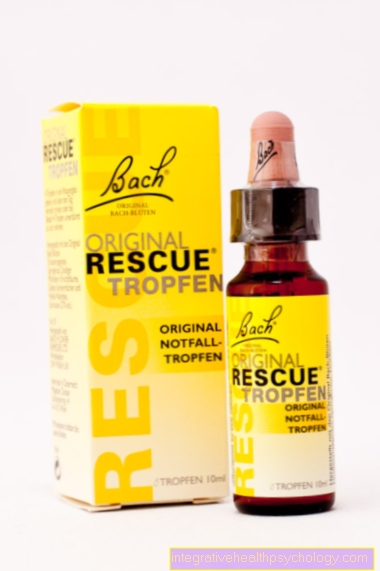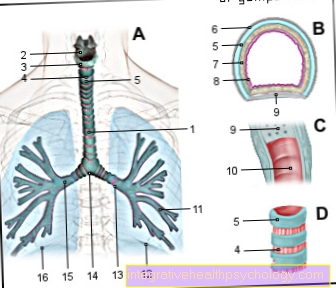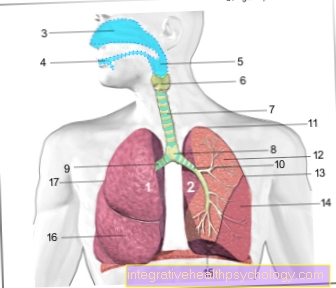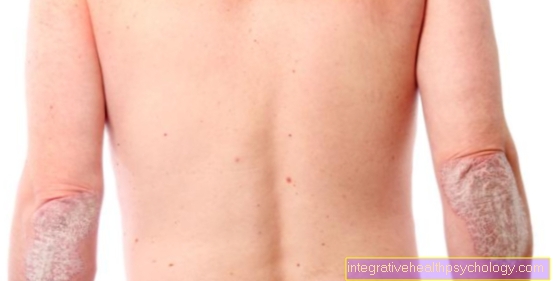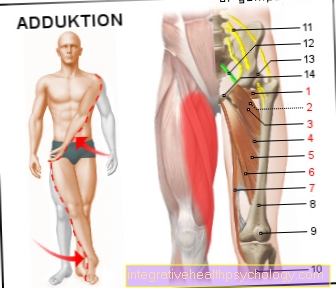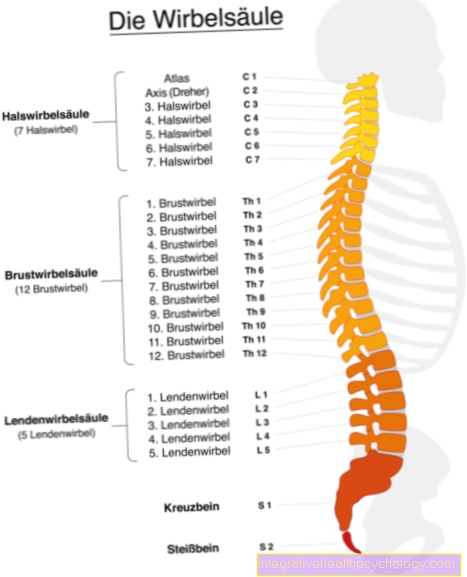Diet in Celiac Disease
Synonyms
- local people
- Sprue
- gluten-induced enteropathy
Explanation
This is one made by grain protein Wheat, rye, barley and oats (gluten) cause damage to the intestinal wall. In the course of the disease, the intestinal villi are destroyed to different degrees and one develops decreased absorption of nutrients through the intestinal wall.
Often that is also missing Lactase enzyme which breaks down lactose and in the majority of cases fats are excreted in the stool (steatorrhea).
The appearance of the native sprue is different and ranges from an extreme disorder of use of the food and insufficient supply severe diarrhea up to uncharacteristic complaints in the Digestive tract.

Since the cereal proteins of the above cereals are known to cause the disease, the therapy of the sprue consists in a consequent elimination of these foods and the adherence to one gluten-free food.
The protein does not cause disease Corn and rice and the pure strength out Wheat, rye, oats and barley.
In practice, the following must be observed: Apart from the pure starch, all products made from wheat, rye, barley and oats should be avoided.
This not only means that the patient must avoid bread, rolls, cakes, semolina, pearl barley, noodles, etc., i.e. foods whose production and composition are generally known. But he is also not allowed to consume foodstuffs to which the addition of cereal products, especially flour, is not so obvious.
These are in particular finished products manufactured by the food industry such as soups, sauces, canned goods, some types of sausage, beverages containing cocoa and much more. There is a particular risk of absorbing grain protein when eating in restaurants and canteens.
For most of those affected, the symptoms disappear completely with a strictly gluten-free diet.
Dietary recommendations for celiac disease
Principle of the diet
- Whole food, 5 meals a day
Lifelong, consistent avoidance of foods containing gluten (made from and with wheat, rye, barley, oats) and substitutes with rice, corn, chestnuts and pure wheat starch (very sensitive patients, however, react to the smallest traces of gluten in pure wheat starch).
Adjusting the diet to the different types of damage to the intestinal wall, such as reducing the intake of fat in stools or Avoid lactase deficiency milk sugar (in the clinical picture "lactose intolerance").
In the Early stage of treatment It is advisable to avoid foods rich in oxalic acid, especially when dairy products cannot be eaten.
These are primarily:
- Swiss chard,
- rhubarb,
- spinach
- cocoa
- Beetroot
- Parsley.
Oxalic acid combines with calcium to form water-insoluble calcium oxalate, cannot be absorbed and the calcium deficiency is exacerbated.
For stubborn fat stools can also MCT fat are used. MCT fats and their use are described in detail in the chapter "Condition after gastric surgery".
As the digestive performance of the mucous membrane of the small intestine improves, fats and lactose can be consumed again in normal amounts. However, avoiding gluten is necessary for life.
Unsuitable foods
- Rye, wheat, barley, oats and the foods made from them. Products such as flour, pearl barley, semolina, flakes, groats, pudding powder, germs, meal and green spelled.
- All common types of bread, cakes, pastries, rusks, breadcrumbs and pasta, soy breads can contain gluten, millet and buckwheat pasta mostly contain gluten.
- Coffee substitute, beer (barley)
Beware of:
- Sausage products can contain grain products as binding agents.
- Fish products, canned fish, in particular in sauces. Fried herring and roasting pug contain gluten.
- Dairy products can contain gluten as a binding agent.
- Ready meals and all industrially produced foods such as potato products, soups, sauces, desserts, sweets, frozen meals, canned goods, etc.
- If in doubt, always avoid the foods mentioned above!
Suitable foods
- All nutrients that are naturally gluten-free such as meat, fish, eggs, milk and dairy products without additives, fruit, vegetables, potatoes, corn, rice, millet, buckwheat, soybeans, chestnuts, juices, honey, jam.
- Corn starch may contain small amounts of gluten and should be avoided if it is very sensitive.
- Industrially manufactured products with the manufacturer's label "gluten-free".
Products specially made for a gluten-free diet. They are marked with a crossed ear and are mainly available in specialist shops or health food stores.
The list of ingredients that is required for packaged foods can provide important information on the composition of a product. However, gluten is increasingly being added to food for technological reasons and then only appears under the declaration "Plant protein product“.
Detailed information on the diet of local sprue can also be obtained from the German Celiac Society V. in Stuttgart.
Daily example of a menu for celiac disease
During the symptom-free phase, without fat restriction, no lactose intolerance.
1. Breakfast
- Coffee with 5 g sugar and 10 g milk
- 90 g gluten-free bread (Baked from a special flour mixture or a finished product / health food store)
- 10 g butter, 25 g apricot jam
- 30 g Emmentaler
2. Breakfast
- 50 g gluten-free bread
- 100g quark (20%) with 5g cress
- 1 glass (125 ml) tomato juice
Having lunch
- 100 g veal schnitzel (or other meat)
- 50 g rice (raw weight)
- 200 g spinach leaves, 10 g cream, salt, nutmeg
- Raw food made from: 100 g carrots, 30 g apple, 15 g sour cream, spices, vinegar, oil
- Vanilla pudding made from: 500 ml milk, 40 g corn starch, 40 g sugar, 1 egg yolk, vanilla pod (makes 4 servings)
- With 50 g currants (fresh or frozen)
Snack in between
- Coffee or tea, 50 g gluten-free biscuits (health food store or homemade)
dinner
- 2 cups of tea
- Toast Hawaii:
- 70 g gluten-free toasted bread (health food store), 5 g butter, 70 g pineapple (can), 40 g cooked ham, 40 g Gouda cheese (45%)
- In addition, 1.5 to 2 liters of drinks such as herbal tea, fruit tea, water, mineral water, thin juice spritzers spread over the day
- The daily example contains approx. 79 g protein, 80 g fat, 240 g carbohydrates, 2200 kcal.











